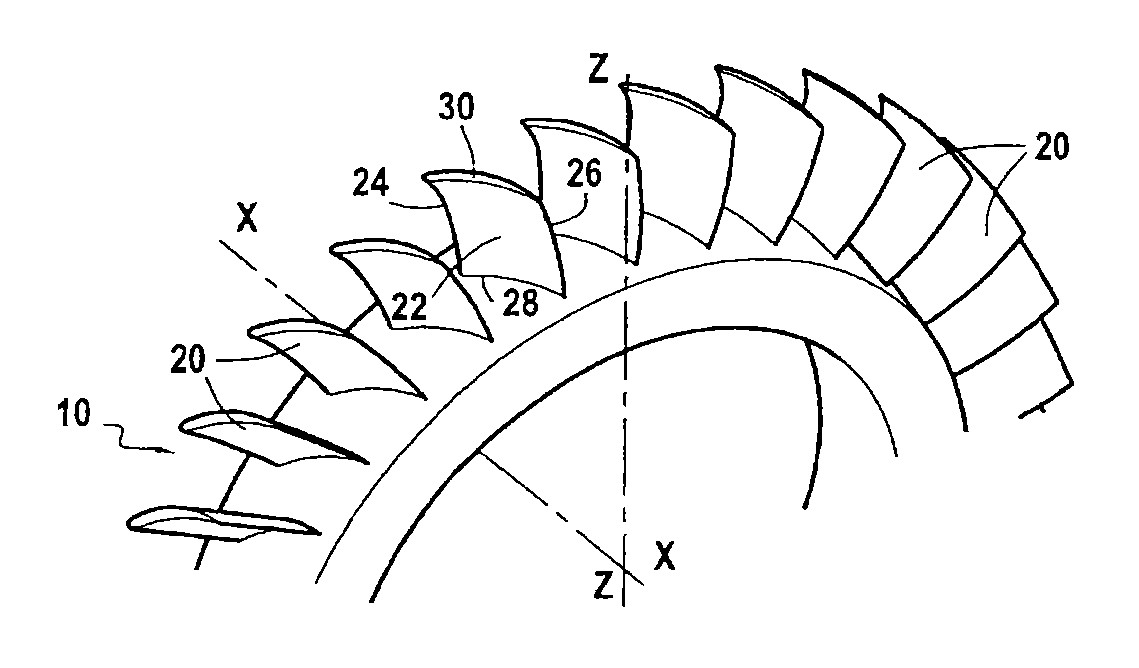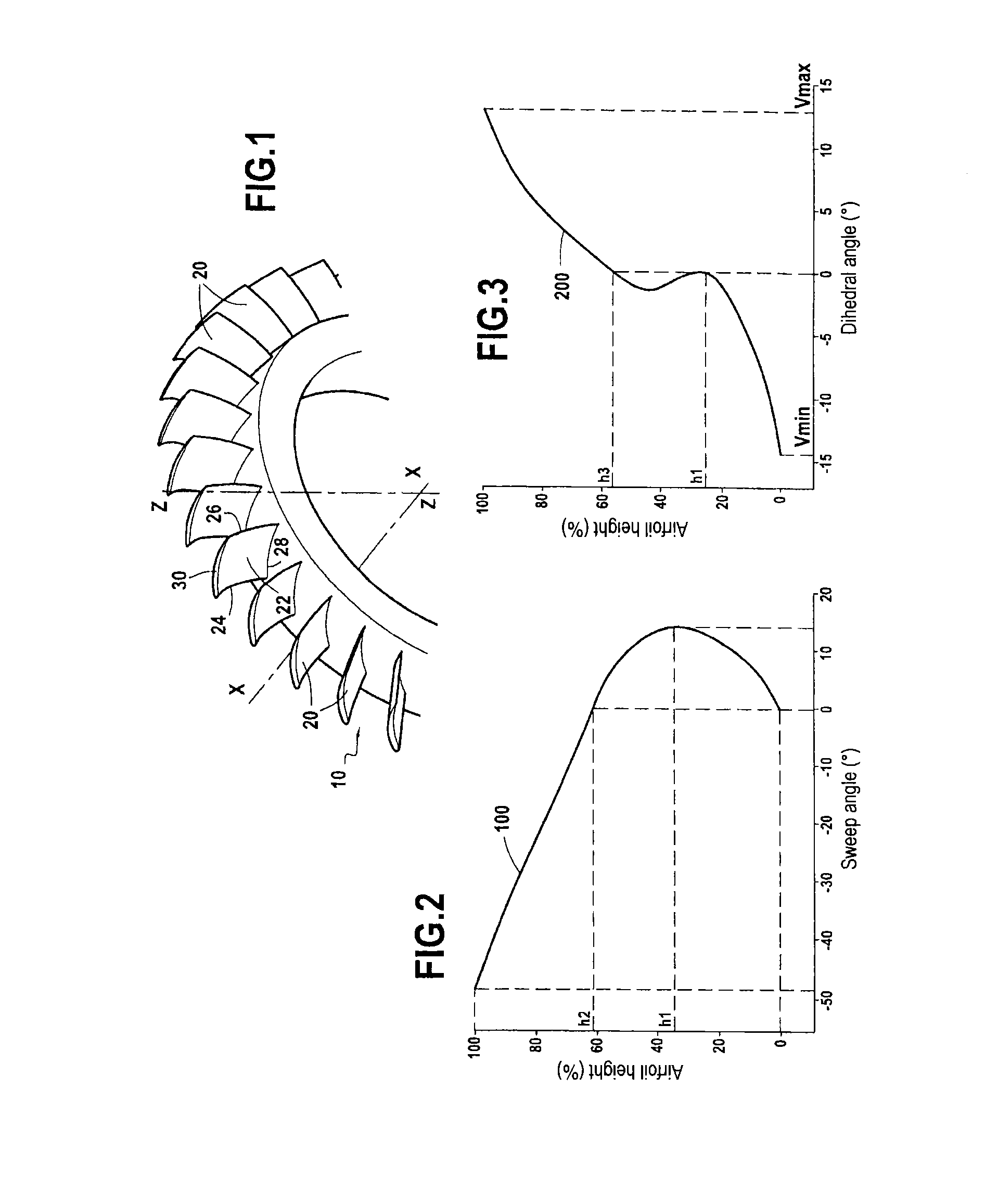Turbine engine blade, in particular for a one-piece bladed disk
a turbine engine and blade technology, applied in the direction of liquid fuel engines, vessel construction, marine propulsion, etc., can solve the problems of reducing the aerodynamic performance of the blade and the difficulty of controlling the aerodynamic flow behavior, and achieve good control of the secondary flow
- Summary
- Abstract
- Description
- Claims
- Application Information
AI Technical Summary
Benefits of technology
Problems solved by technology
Method used
Image
Examples
Embodiment Construction
[0018]The invention applies to any turbine engine blade.
[0019]The invention relates more particularly but not exclusively to the blades of a one-piece bladed disk for a turbine engine, such as a disk 10 of the downstream stages of a high pressure compressor in a turbojet, like the disk shown in FIG. 1. The blades 20 of such a disk have an airfoil of small radial height, e.g. a height of the order of 25 millimeters (mm), and they are positioned in a “plunging” flow passage, i.e. a passage that slopes towards the axis of rotation of the turbojet.
[0020]In known manner, each blade 20 comprises an airfoil 22 that extends axially (i.e. along the longitudinal axis X-X of the turbojet) between a leading edge 24 and a trailing edge 26, and that extends radially (i.e. along a radial axis Z-Z perpendicular to the longitudinal axis X-X) between a root 28 and a tip 30.
[0021]According to the invention, the leading edge 24 of the blade airfoil presents a sweep angle that is positive and that incre...
PUM
 Login to View More
Login to View More Abstract
Description
Claims
Application Information
 Login to View More
Login to View More - R&D
- Intellectual Property
- Life Sciences
- Materials
- Tech Scout
- Unparalleled Data Quality
- Higher Quality Content
- 60% Fewer Hallucinations
Browse by: Latest US Patents, China's latest patents, Technical Efficacy Thesaurus, Application Domain, Technology Topic, Popular Technical Reports.
© 2025 PatSnap. All rights reserved.Legal|Privacy policy|Modern Slavery Act Transparency Statement|Sitemap|About US| Contact US: help@patsnap.com


